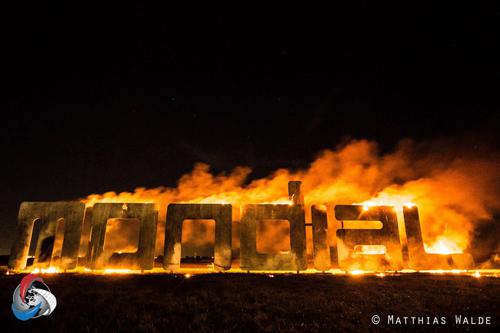World Parachuting Championships 2016 - Wrap Up
As the 2016 Mondial draws to a close it has got me thinking about what competitive skydiving means to our community as a whole. Most of the world has little or no idea that the act of falling from aeroplanes can qualify in form and function as a sport - let alone into the myriad ways of counting up points to assess who is the best at all its different disciplines. Many of us begin our careers in this same way - learning to skydive because it is exciting and cool before knowing anything about the existence of a competitive element. During the height of a serious competition it can sometimes seem a long road from those initial intentions of hoofing about in the sky with your friends - serious faces glued to monitors, disappointment in a missed move or a weak round, tension amongst a team, arguments about the rules and controversy over judging. With the pressure on it can be easy to cast an envious glance at the easy body language of the fun-jumper loads sprinkled here and there amongst the motivated and meaningful march of team after team after team.
Yet competition is a big part is how we evolve. Gathering the most accomplished of our peers into a single place for the purpose of deciding who is best is a huge undertaking - the collected years of refined skill on display at a world level skydiving competition is amazing to witness and the sheer amount of training put into the last week or so here at Skydive Chicago often represents the accumulated knowledge of entire careers in the sky - years and decades - to which the end result of all this is more than simply deciding who is the best. Friendships are made and plans for the future created. Lines of communication are drawn across borders in the skydiving world where perhaps there were none. Skills in every discipline that have been honed to a fine edge over recent weeks and months scatter across the globe as this great swarm disperses - to filter back into the progress of skydiving’s nations, communities and individuals.
Putting on the Mondial represents a three-year project for Skydive Chicago, and their attention to detail came together with few hiccups. The main issue they have had to wrestle is that the sheer amount of accuracy teams represented meant that despite recognising the task it and going hard from the start they were still trying to get finished after all the other disciplines had long since wrapped up their business. Medal ceremonies were held as the separate competitions ended - starting with the artistic categories, VFS and the eight-way awards first then moving through the others each evening that they finished. There are lot of disciplines at the Mondial which involves much applause, hugs, standing respectfully and proudly for national anthems, and positioning for endless photos. It was an entirely sensible choice to break the awards up over empty evenings as to do it all at once would take a long time indeed - yet this perhaps resulted in a slight sense of fragmentation after the grand communion of the opening ceremony and the weeks proceedings as teams began to scatter once their affairs grew complete. It might have been missing a trick to not keep everyone together until the end - giving the finale a touch more scale and bombast. Yet these are small things in an otherwise impressive undertaking.
With the end in sight the SDC staff even put in the extra work to bring the banquet and party forward a day to breathe a little room into those tight travel schedules or perhaps allow time to pursue an adventure in the city - for which many are grateful. Many are now in debt to SDC for a free day through which to nurse a hangover brought on by the multiple encouragements of a table-service banquet, a local funk band, the famous SDC fireworks display and Jay Moledzki playing records late into the night.
So what is next for us? New champions have been created and numerous wold records broken (some obliterated). What we could really use though is some more exposure for our sport. The people of Ottawa and the surrounding communities of Illinois have been as welcoming and hospitable as that for which the people of the United States are celebrated by anyone who has ever actually been here. However despite it being on their very doorstep, when you say “skydiving” and “world championships” together in a sentence there is that familiar battle behind people’s eyes between admiration and incomprehension as they try to commute one idea to the next with no frame of reference. With advances in training methods and equipment skydiving only grows more accessible so the way ahead is bright and clear. That there are places like Skydive Chicago in the world - with the space, support structure and lift capacity to make the demands of a forty-nation get together seem relaxed and efficient means we can plan healthily for the future competitive skydiving - building on our successes and see the sport as a whole continue to grow, educate and amaze people around the world.
View full list of results here










